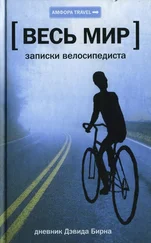It goes on. . . . In the book there’s a beautiful Kafkaesque scene where a woman, denied employment for suspect activities, is called in for questioning:“Why don’t you have a job?”“You tell me.”“You’re a smart woman, surely you can find employment.”“No, I am unemployed.”“That can’t be, there is no unemployment in the People’s Republic.”
We like to think such stories are typical of middle European paranoia and behavior under repressive Socialist regimes. But imagine someone being questioned by Homeland Security saying, “But I was tortured, the information was obtained under duress.”
“The United States does not torture people, so that can’t be true.”
These days many people know of the Stasi from the recent movie The Lives of Others. The combination of psychological and Orwellian horror is hellish and weirdly seductive. The agency was known for turning citizens against their neighbors by subtle pressure, implied threats, or economic incentives. It seems it’s something that many national security agencies do from time to time. (“If you see something, say something.”) Turning the citizenry into rats makes the entire populace scared and docile, and after a while no one knows who’s informing on whom. Anyone could be an informer or an agent. The world becomes a Philip K. Dick novel—although in his version everyone would also be informing on themselves.
The Stasi Museum is a massive compound that encloses a whole city block. I ride my bike into the inner courtyard and lock it up. Since both the parking and the main entrances to the various buildings are located inside the compound, when it was functioning no one outside could see who was coming or going—exits and entrances from the building all took place within the large interior courtyard. I am told that the whole complex is now for sale! For one euro! Well, there are conditions. The city is actually trying to sell it to Germany, on the condition that they will turn it into a proper museum.
As it now exists, the museum is rudimentary. One floor of former offices displays clunky spy devices: cameras in logs, behind large coat buttons, and in fake rocks. Here’s one in a birdhouse—a little obvious, I think:

Maybe the intent was actually not to hide this surveillance gear too well. Maybe it was deemed more important to make people aware that they were being looked at and listened to rather than having the public just suspect that the spying was going on. A camera this blatant would confirm the rumors. If you’re not aware you’re being observed, if there isn’t occasional proof, then you won’t live in fear, so then what’s the point? The best surveillance is when everyone suspects that they’re being watched all the time. The government then doesn’t even have to watch the cameras—they need only let people believe someone might be watching. Sometimes buildings here in the United States put up fake surveillance cameras in the hopes of discouraging perps. Of course, it wasn’t all just charmingly nutty surveillance stuff here at Stasi headquarters—not everything is clunky tech that we now find oddly amusing. People’s lives were ruined, devastated, destroyed; their careers came to a dead end at the least suspicion. There were prison terms and torture without stated reason (where have I heard that one before?), and information and culture was heavily censored. And the food in the East wasn’t that great, either.
On a higher floor were the preserved offices of the head of Stasi, Erich Mielke. His offices weren’t very grand by Western standards, but he did have a little apartment attached, which was pretty cute. One can now look at this style of furnishing as an example of a very peculiar design aesthetic. I’m sure for some the mere sight of these curtains and old phones would make them shudder, but for many now they embody a kind of totalitarian kitsch.
The style is hardly luxurious—but then maybe these higher-ups saw themselves as modest functionaries who were just doing the noble work of the state, of the masses, rather than surrounding themselves with luxury as would quasi-oligarchs or entitled royalty. I remember visiting Pravda headquarters in Moscow in the ’90s, and the decorator must have been the same guy. In that room there were also no decadent touches—which in a power nexus like that was a little surprising. There is almost an absence of power symbols—no marble staircases, giant chandeliers, or even soft leather chairs. Maybe this austerity was meant to be representative of the higher calling being represented, but in this context that pretension coupled with absolute power became all the more chilling. There was one odd decorative item in the Pravda director’s office—a very long bookshelf that held only the collected works of Lenin. (When did Lenin have time to write all those volumes?)

As the Berlin Wall was coming down the shredding machines in this place went into overdrive. Imagine what an instantaneous change of worldview that must have been—one minute you’re the proud controller of destinies and the next you’re a disgusting worm intent on erasing your own life’s work. I guess the folks who erased the CIA torture tapes and Nixon’s eighteen minutes must have felt the same way. Maybe they all didn’t exactly feel guilty, but they at least knew they and their bosses would be up shit creek if they were caught. Most of the Stasi shredding machines were overwhelmed and got clogged and they had to call for reinforcements. A huge number of documents were destroyed, but there were far too many to shred in just a few days, so there are organizations now that will allow you to locate your file, if it is readable. There is also a group that is attempting to reconstitute documents from the shredded strips of paper—very labor intensive. Here, from our side of the pond, in New York City, is a page from John Lennon’s FBI file. On this particular page none of it is “uncensored”—it appears sort of like a piece of conceptual art.

What Is the Time Limit on Justice?
Should the people whose lives were ruined by the Stasi, or by any similar governmental agency anywhere, be due financial reparations? Should their real estate be returned to them or to their heirs? Should there at least have been a truth and reconciliation committee here, as there was in South Africa, to clear the air and allow the country and individuals to move on? (In their version, there are no punishments or reparations, but only if indeed the entire truth is aired.)
The people of Zimbabwe, formerly Rhodesia, have been attempting in recent years to reclaim the farming lands taken from their ancestors many years ago by the white settlers. The whites have sometimes lived on these appropriated farms for three generations or more, and naturally they now think of them as theirs; they view the land as their homeland now too. The whites accept—so we are told—that the nation should not and cannot be ruled by outsiders anymore, or even by a small white minority, but they see these homes and farms as their own. They have raised children, built infrastructure, and improved the fields. But not just on their own farm. To some extent they have put into place the infrastructure that allowed the whole country to function. But, as the political tide has recently turned and the whites are no longer the political bosses, their right to hold on to 80 percent of the country’s arable land just because their ancestors stole it seems less a viable argument and less likely to continue. Mugabe, who may have come into power showing promise that a self-governed African country rich in resources and with functioning systems might flourish, has sadly devolved into a corrupt and violent despot desperate to hold on to power at any cost. The descendants of the original inhabitants from the precolonial era, along with Mugabe’s greedy and opportunistic self-appointed representatives, have begun to reappropriate the farms by force.
Читать дальше












